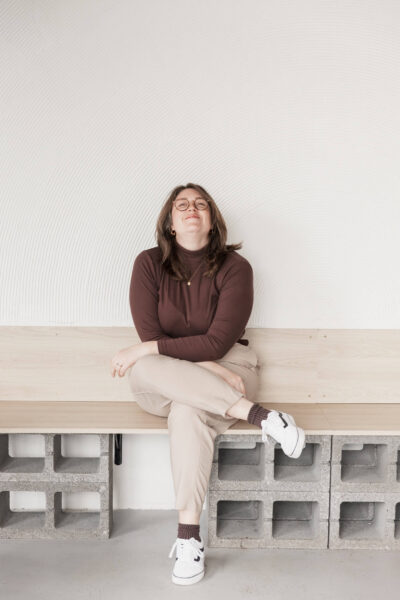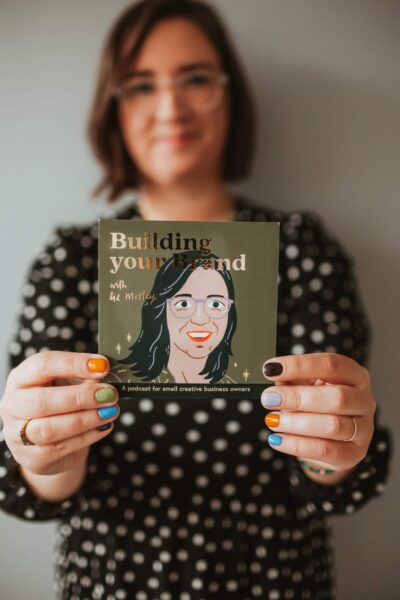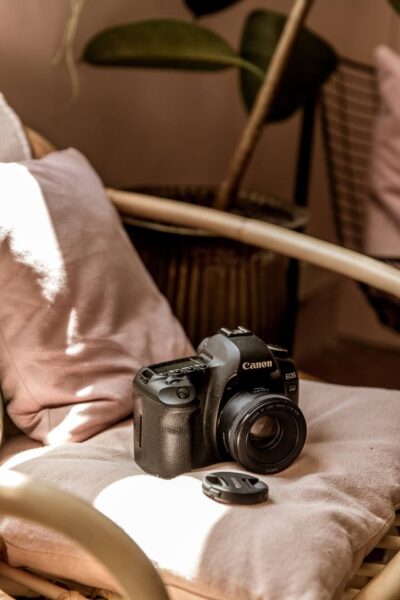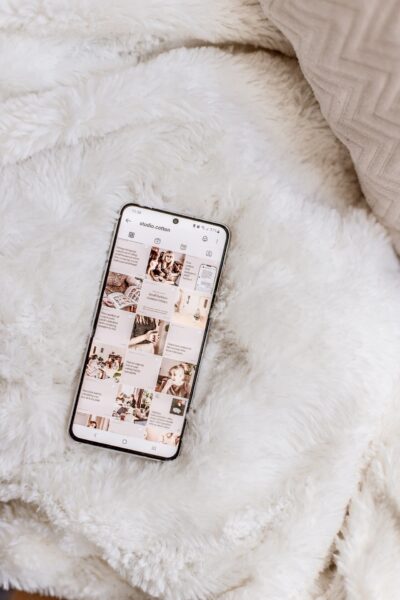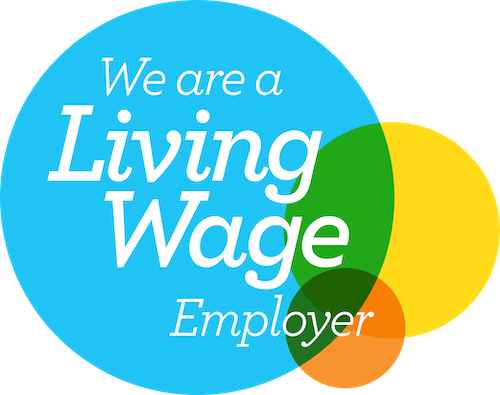I hate using the word ‘mistake’ when it comes to small business websites, especially websites that have been DIYed. A mistake is objectively negative – it is a wrongdoing. A mistake is leaving your pizza in the oven for an hour instead of 15 minutes, or sending me a birthday card in August when actually my birthday is 10th June.
A lot of web design choices and features that are often called mistakes are just things that haven’t been done. More neutrals than negatives, like not cooking your pizza at all. Your pizza is still good – it’s still the same pizza filled with all sorts of yummy potential – it’s just not quite reached it’s final, deliciously-cooked form.
Whilst researching this blog article (and by “researching” I mean Googling what other people have already blogged about) a small business website mistake that kept coming up was “Not doing SEO”.
Now I looooove SEO, and I blog about it all the gosh darn time, but “not doing SEO” can’t be a mistake if you don’t know that SEO is even a thing – it’s like saying “not sending Aime a birthday card in June” was a mistake when you didn’t know I existed until right this moment.
I’m Aime BTW, and our address is in the website footer so you can send that birthday card next 10th June 😉
Anywhosies, that was a long lead up to my justification for this blog – 8 *silly* small business website mistakes. We’re focusing on silly mistakes. Boo-boos. Flubs. Goofs. Snafus. Clangers. The kind of “OMG how on Earth did I miss that” moments that come up at least once or twice in every expert website consultation I’ve ever had with one of our small business clients.
Things that you defo, DEFO knew you should’ve done, but totally missed and now you’re feeling a lil wally-esque.
This article is intended in good humour, but every silly mistake I’ve included is one that I’ve seen on multiple occasions – so make sure to check your small business website for all of our bungles and gaffes.
1. Not writing the name of your small business anywhere on your homepage
A phrase you might hear me parrot whenever chatting about SEO, is “if you want to rank for something, you need to write that something on your website”.
Now I’m gonna go out on a limb and assume you’d really like for your website to appear in Google’s search results when your customers search for your small business.
The name of your business is an SEO keyword. It is a term that is crucial to understand who you are, and yet I cannot begin to count how many small businesses have made the silly mistake of not actually writing their business name on their business website – missing their homepage too.
If you’re now thinking “Fluff a duck, have I forgotten to write my business name on my homepage??!?!” – open it now (in a new tab, don’t forget to come back and finish this list) and hit CMD + F or CTRL + F on your keyboard, and type in your business name.
I hope you get at least 3 results, but if you don’t – hit that edit button right away and start popping your business name all over the shop.
Bonus thing: I’ve written “Studio Cotton” 18 times on our homepage, so make sure to check that one out for some sneaky ideas on where to pop your small business’ name.
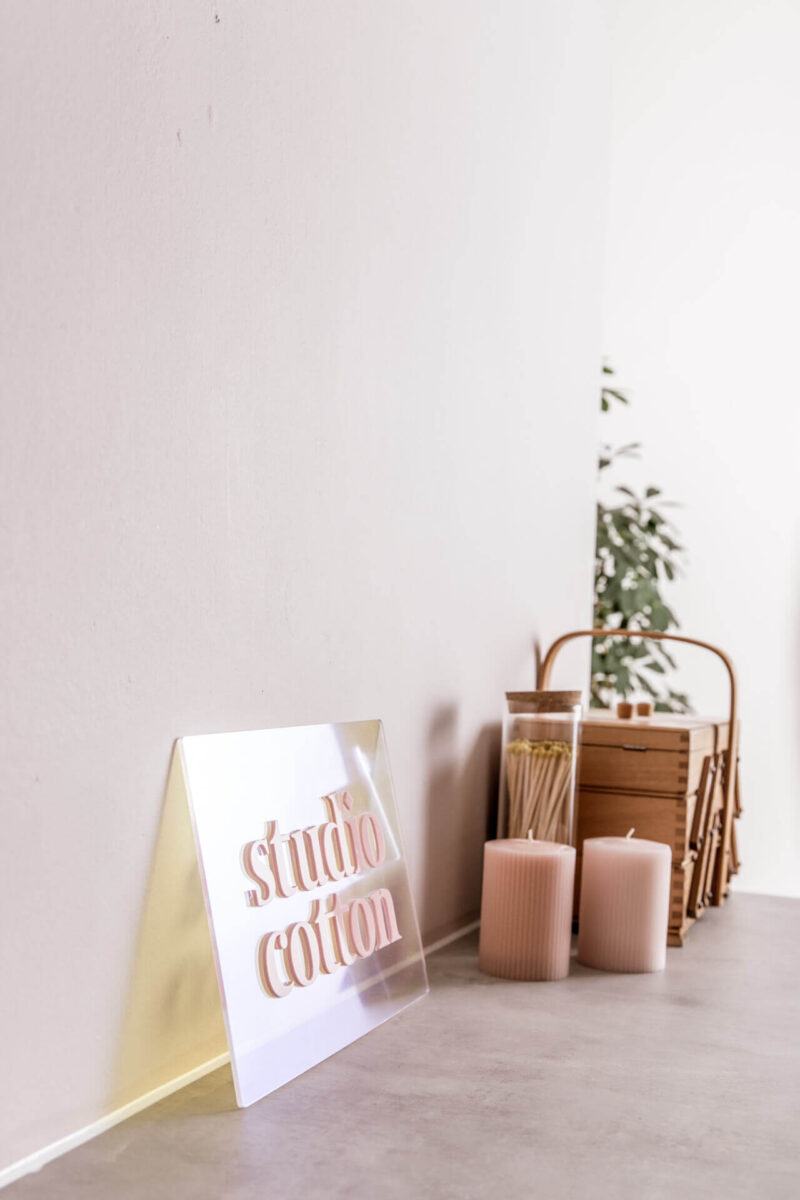
2. An illegible logo
Ya know how Nike have so much recognition, they could just pop a contextless tick on a courgette and you’d know it was a Nike courgette? Your small business is not Nike.
Without epic amounts of brand recognition, your customers and brand new website visitors will primarily rely on your website logo to know what your small business is actually called.
Even if you are in my goodest books for remembering to type out your small business name, your logo is still of literally the utmost importance. It is the go-to design element – the hook, the home, the source, the thingy – for your website visitors.
Make sure the version of your logo includes the name of your small business, and make sure every word in that logo is large enough to read clearly when your website loads.
3. Missing your location, especially when you are a location-specific business
I’m talking to you, premium café that I’m pretty sure is in Brighton but you might actually have another branch in London but actually I’m not quite sure.
If you have a physical location like a shop, cafe, beauty rooms, or inflatable theme park for adults – a big dollop of your customers are probably trying to figure out where you are so that they can give you a nice bucket of money for the things that you sell.
I know this, you know this; and yet some of you are still forgetting to pop your location on your website.
I also know that your customers can probably find your location on Google Maps, but if they also need info from your website (like product ranges, pricing, menus and if you could cater for a 36th birthday party on 10th June at your inflatable theme park for adults) you don’t want to ask them to go to 2 different places to get all of their answers, as that drastically reduces their likelihood of finding what they need.
Now this doesn’t just apply to small businesses that serve their customers from their own dedicated premises.
Let’s say you provide bouncy castle hire, and that you very reasonably would only want to deliver said bouncy castles to locations within 10 miles of your bouncy castle storage facility.
Your customers need to know that they are in your area. Ya need to say that you deliver bouncy castles to Bristol, specifically Bedminster. Or maybe the city centre if I can squeeze one in my office. I mean, an office. It’s not about me. Maybe it’s about me.
Even here at Studio Cotton – we’re a web design company that works with small businesses in the next county and the next country and the next continent. It’s still mega important that our website visitors know we’re in Bristol, since:
- Word of mouth travels faster and wider amongst smaller communities like local areas
- I want the people I meet at IRL networking events to find me
- There’s a tonne of small businesses in Bristol who prefer to work with a local web design company, and I’d like that web design company to be my web design company
Bonus bonus thing: I’ve written “Bristol” 19 times on our homepage, and your defo gonna wanna check that one out too.
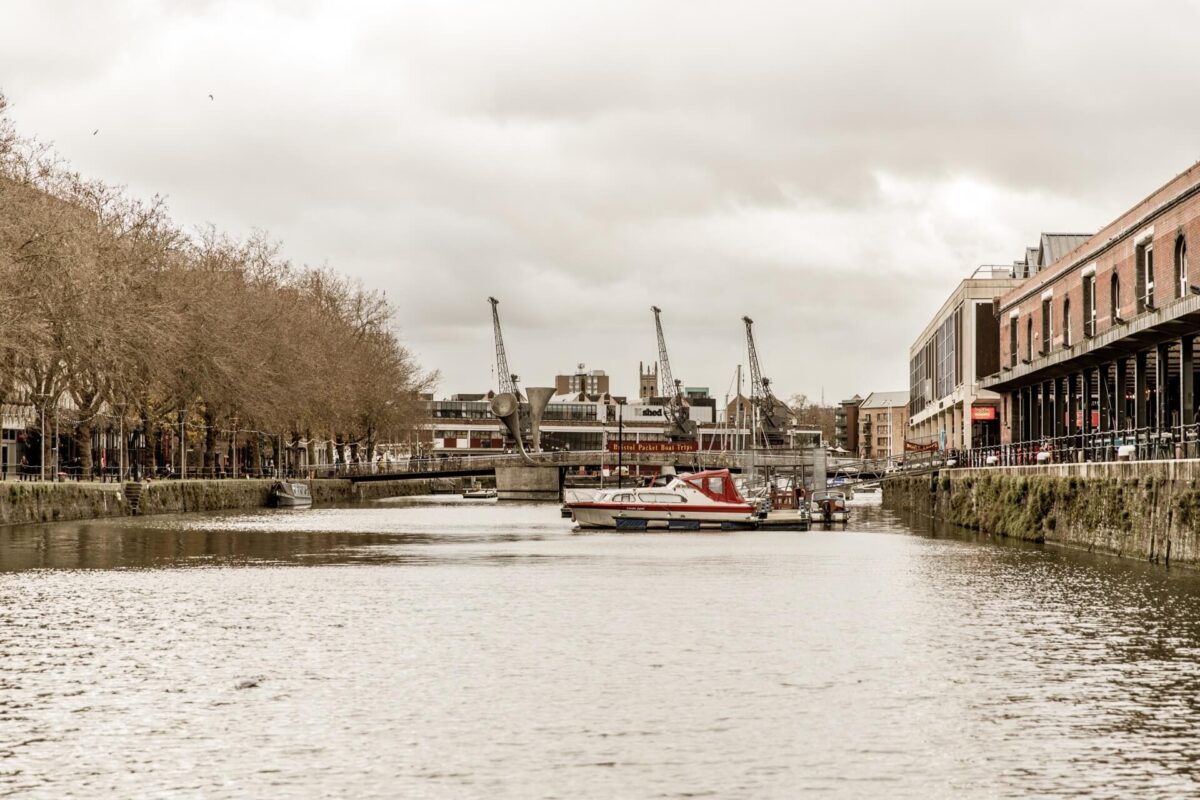
4. No buttons
Humans love buttons. I mean, that does sound a lil whimsical but just think of how many sight gags you’ve seen in pop culture when a character encounters a big-ass button and just can help but give it a lil press.
I mean there’s a reason why a toddler throws a tantrum when they don’t get to press the button at a pelican crossing – it’s because pressing buttons is great. Lovely, lovely buttons.
Buttons are a visual prompt to someone to take an action, and receive something in return. If you want your website visitors to take an action, e.g. view something you sell, and see a result, e.g. a product page – you’re gonna want buttons. Plenty of them.
5. Leaving in that placeholder text
Every designer, writer, editor and marketer knows that sense of insider self-satisfaction when they spot a cheeky dollop of lorem ipsum on a business’ website.
For those ‘outside of the know’, lorem ipsum is a form of latin gobbledy gook that looks like words but doesn’t say anything, and it’s been used as dummy text from somewhere between 100 and 600 years. The first drafts of the websites we make at Studio Cotton are always chocka with lorem ipsum, as well as prompts like:
- Please write a sentence about why you started your small business
- Short seasonal promotion will go up here
- Tell your reader what they get on your mailing list
- Brand value 1: description of brand value
We don’t include copywriting as standard in our web design projects, so it’s our clients’ responsibility to add the real content. However, as much as we try our best to find and flag all the placeholder text on our clients’ websites, a sentence or heading almost always manages to slip through.
This is a silly mistake that everyone will make eventually, so make sure to take a moment to review every single page, post, and product on your small business website.
PS. Big thanks to Laura from Rock & Realm who shared this one with us via our Studio Cotton Clubhouse.
6. Popping a blog-less blog in your main website menu
Placing a prominent link to page that is blank, under maintenance, or coming soon would all probably make it into my silly mistake category – but I don’t see those anywhere near as often as I see a blog-less blog.
That’s a blog without articles, or even a blog with 3 articles but the last one was written in 2017 and is about a service you no longer sell.
Blogging is bangin’ for SEO, and it’s another topic we write about all the time at Studio Cotton. While it is categorically not true that you need to blog every fortnight/month for it to matter, it is true that your small business only wants people to visit your blog page if they’re actually gonna find something worthwhile.
So if you haven’t got any (or many) articles, or you’re not proud of what you’ve published, or your content is out of date – just chuck that link in your website footer. Heck, we are prolific bloggers at Studio Cotton, and we still shove our blog link in that diddy bar at the very top of your screen.
It’s also totes ok to write off blogging if you’re just not interested in writing and don’t have the budget/inclination out outsource it. Just remove the link completely, as you can always pop it back if/when you change your mind.
Thoughtfully crafted websites for lovely small businesses
Utterly splendid websites designed & built exclusively for small businesses (with all the bells and even more whistles).

7. Social icons that aren’t linked up to your business’ social media accounts
Another submission from our Studio Cotton Clubhouse, this time from marketing & PR legend Lucy Meek (who also happens to be one of our web design clients).
I kicked myself for not thinking of this one, since it’s probably the most common silly mistake I encounter. Like Lucy, I seem to notice it the most on websites built with Wix, since their default social media icons link to all the Wix social media accounts.
Well played Wix, well played.
Those social media icon links are so easy to look over, and will also break every time you change your social media account name – so make sure to click them regularly.
I have 2 tangents on this point:
- If your social media icon links are broken, would you want someone to tell you? I always want to flag it but don’t wanna sound like a pedantic ass – DM me on Instagram with your opinion.
- If you’re not actively using your social accounts to share content for your customers, please don’t promote them on your website.
8. Ignoring the legal stuff
I am not a lawyer and this isn’t legal advice. We all know that there are specific laws that every business needs to adhere too, no matter how small our business are. Stuff like:
- Protecting your customers’ personal data; e.g. not printing out a list of all your orders and leaving all those addresses on a train, or making sure to password protect your client management systems (DPA/GDPR)
- Ensuring customers can receive your business offering, regardless of any protected characteristic; e.g. providing a ramp to ensure wheelchair users can access your cafe, or only offering your branding services to a specific gender identity (Equality Act)
- Only sending customers electronic marketing they have specifically opted-in to receive, e.g. detailing what you intend to send subscribers in your marketing emails, and then only sending what was agreed (PECR)
There’s also a tonne of laws that are industry and product specific, like how you can’t say your product treats a medical condition “which includes any injury, ailment or adverse condition, whether of body or mind” outside of its license (The Human Medicines Regulations 2012).
Now, again, I am not a lawyer and this isn’t legal advice – but you can bet your bottom dollar that if I, for example, wanted to sell unlicensed CBD oil (which is by definition a medicine) on my small business website, I wouldn’t write the terms “cure”, “fight”, or “heal” in my website product descriptions because that would be totes illegal.
Anyways, I guess this silly mistake goes beyond silly territory and into “Ah shoot, this pish is proper serious and I need to drop everything right now to fix it” territory.
So there are 7 silly small business website mistakes, and an 8th one that is actually a lot more serious. And as a final bonus treat, here’s some more submissions from small-business owning members of our Studio Cotton Clubhouse.
Making sure text is big enough. I think sometimes small text looks more aesthetically pleasing when building a page but isn’t helpful for customers/accessibility.
Also, double-checking the page you’ve updated in your site builder in real life. I’ve definitely made changes before and then not checked them, only to realise later that things aren’t how I wanted them to appear. I’ve also had this problem when I’ve made a bulk edit. Each page defo needs some eyes across it after the change.
Melissa, MW Studio
Really REALLY poor font choices. I know we’re a creative bunch and love a fancy font, but it’s way too easy to pick something fun but unreadable.
Lack of basic info on product pages, like the dimensions of something. I’d say most of my decisions not to buy something are because basic info is missing, and I’m not going to email you to ask.
Joy, The Glass of Joy
Not actually stating what the business does and how it can help you!
Jess, Jess a Little Creative
I second Jess, the amount of small business websites who don’t say what they do is shocking.
Militza, Militza Ortiz Jewellery


